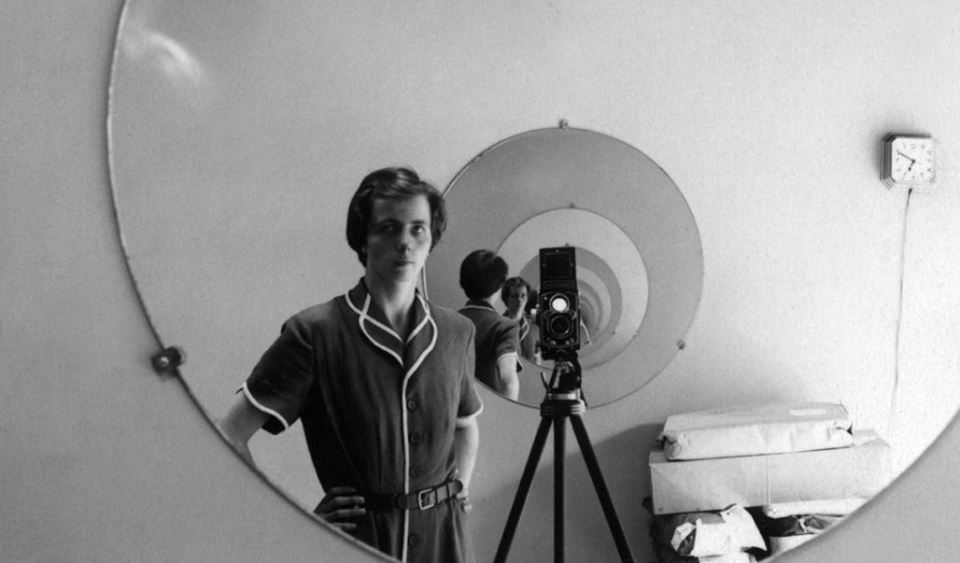After the United States, Vivian Maier’s charm is enchanting Europe.
A nanny for wealthy families in New York and Chicago since the early 1950s, for over five decades she photographed life on the streets of the cities where she lived without ever making her work known. Never an exhibition, not even a marginal one, never a publication.
What she left behind is an immense archive, with more than 150,000 negatives, a myriad of undeveloped films, prints, films in super 8 or 16 millimeters, recordings, notes and other documents of various kinds that the “French” nanny (the mother was originally from the Provençal Alps) he accumulated in the rooms in which he found himself living, guarding everything with great jealousy.
Finally confined to a warehouse, the material was confiscated in 2007, for non-payment of rent, and then discovered by the young John Maloof in a Chicago auction house.
The exhibition at the MAN in Nuoro, curated by Anne Morin, created in collaboration with diChroma Photography, will be Vivian Maier’s first hosted by an Italian public institution.
Starting from the materials collected by John Maloof, the exhibition project provides an overall vision of Vivian Maier’s activity by placing emphasis on key elements of her poetics, such as the obsession with documentation and accumulation, fundamental for the construction of a correct artistic profile, as well as biographical one.
Along with 120 of the most important photographs from Maloof’s archive, captured between the early 1950s and the late 1960s, the exhibition also presents a series of ten Super 8 films and a selection of color images taken from the mid-1960s onwards. of the sixties. Without narrative fabric and without camera movements, the films shed light on his way of approaching the subject, providing useful clues for the interpretation of the photographic work.
The shots from the Seventies instead tell the story of the change in vision, dictated by the transition from the Rolleiflex to the Leica, which forced Vivian Maier to transfer the camera from the height of the belly to that of the eye, offering her new possibilities of vision and storytelling.
The exhibition will also be enriched by a series of contact sheets, never exhibited before, useful for understanding the vision and development processes of the American photographer.
What conquers the public, even before the photographs, is the story of “Nanny Vivian”, perfect for an existential novel or as the plot of a bittersweet comedy; so unusual, so fascinating, that it doesn’t seem real.
But beyond the story, beyond the biographical notes, the little big secrets revealed by the people who knew her, beyond her portrait of an eccentric and reserved woman, tough and curious like few others, guardian of a mystery not yet revealed, beyond everything there is the great photographic work of Vivian Maier, about which much still remains to be said.
Vivian Maier shot mostly in her free time and judging by the results one can believe that, in that time, she did nothing else. His favorite subjects were streets and people, more rarely architecture, objects and landscapes.
She photographed what suddenly appeared before her, whether it was strange, unusual, noteworthy, or the most common of everyday actions. Her world was “the others”, the strangers, the anonymous people of the cities, with whom she came into contact for brief moments, always maintaining a certain distance which allowed her to make the portrayed subjects the unaware protagonists of small-large stories of no importance .
Every now and then, however, in some more daring compositions, Vivian Maier made herself visible, she crossed the threshold of the scene to become part of her story herself. The reflection of his face on a glass, the projection of the shadow on the ground, his silhouette appear in the perimeter of many images, almost always broken by shadows or reflections, with the somewhat obsessive insistence of those who, together with an idea of the world, he is above all looking for himself. In this endless investigation she sometimes also involved the children entrusted to her, forcing them to follow her around the city, in often degraded areas of New York or Chicago. To a sensitive and benevolent gaze towards the humble, the marginalized, he combined a sarcastic streak, evident in many stolen shots, which struck everyone, from the rich bourgeois of the upper neighborhoods to the drifters of the suburbs.
“Vivian Maier – states Lorenzo Giusti, Director of the MAN – is spoken of today as a great photographer of the twentieth century, to be compared to the masters of street reportage, from Alfred Eisenstaedt to Robert Frank, from Diane Arbus to Lisette Model. However, large museum institutions struggle to legitimize his work, either because, in his entire life, he never had a single opportunity to show it, or because of the widespread – and legitimate – distrust towards the activity of “hobbyists”. But museums, as we know, always arrive a little late.
What is striking about Vivian Maier’s works is not only the capacity for observation, the watchful eye attentive to every significant variation in the whole, the skill of composition and framing. What is most impressive is the ease in moving from one register to another, from news, to tragedy, to the comedy of the absurd, always keeping firm faith in his own gaze. A voice that remained out of the chorus for a long time, but undoubtedly well tuned.”


